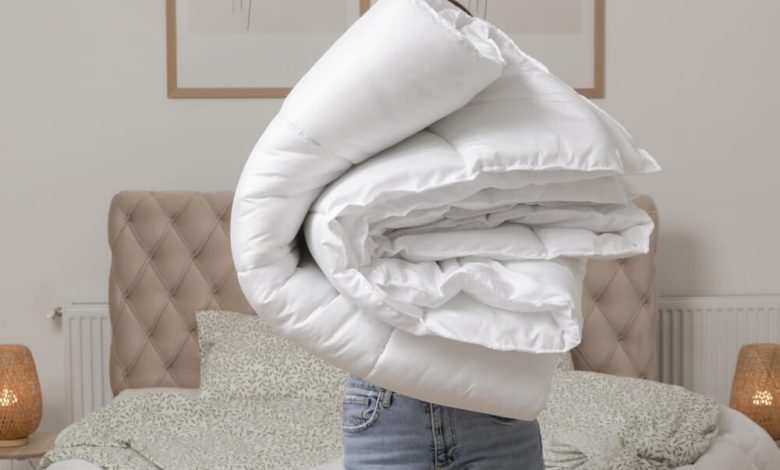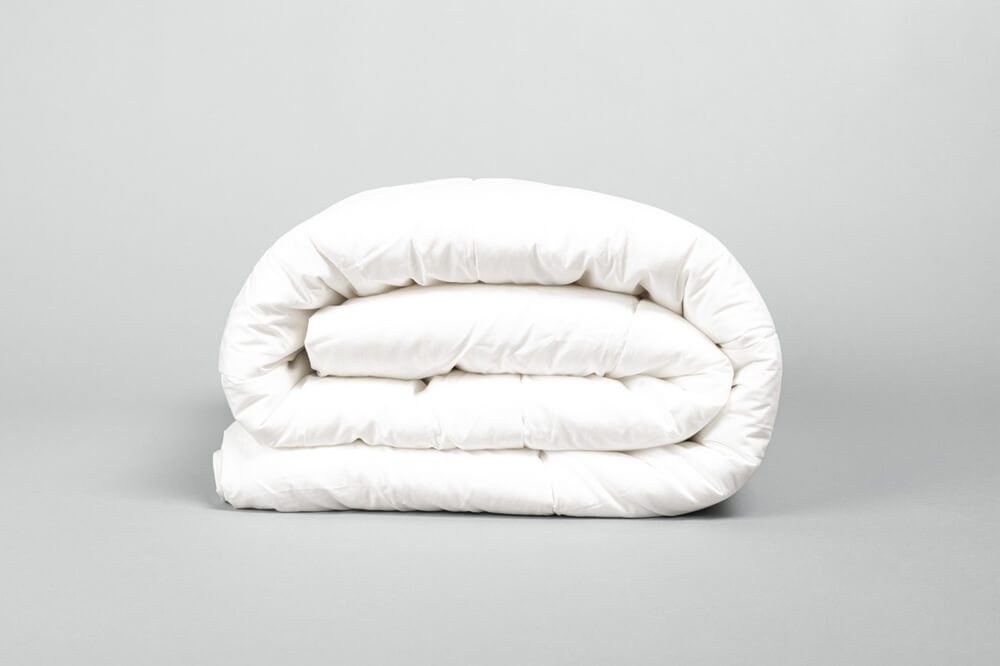What is a Duvet and What Difference With Comforter

Understanding the differences between duvets and comforters is essential for creating a cozy sleeping environment. This guide covers their definitions, compositions, uses, benefits, and maintenance. By exploring key differences and care tips, we help you choose the best bedding option for your lifestyle.
Defining Duvets and Comforters
When it comes to bedding essentials, understanding the difference between duvets and comforters can help you make an informed decision for a comfortable night’s sleep. Let’s delve into the definitions and features of these two popular bedding items.
A duvet is a soft, flat bag filled with down, feathers, wool, or a synthetic alternative. The term “duvet” originates from the French word for down, reflecting its traditional filling material. Typically paired with a removable cover known as a duvet cover, this bedding piece is designed to be used as the primary blanket on your bed. One of the main advantages of using a duvet is its versatility; you can easily change the cover to match your decor or wash it separately to maintain hygiene.
On the other hand, a comforter is usually quilted with evenly distributed filling and serves as both an insulating layer and decorative top layer for your bed. Unlike duvets, comforters come in various thicknesses and are often sold as part of a bedding set that includes matching pillow shams and sheets. The primary distinction in terms of maintenance is that comforters do not require an additional cover; however, they may need more frequent washing due to direct exposure.
Understanding these bedding basics helps ensure you choose the right option tailored to your needs for warmth and style preferences. Whether you opt for the customizable convenience of a duvet or the all-in-one appeal of a comforter, both play crucial roles in achieving restful sleep and enhancing bedroom aesthetics.
The Anatomy of a Duvet (Composition, Use, and Benefits)

Understanding the composition and benefits of a duvet can help you make an informed decision when selecting the perfect bedding. A duvet typically consists of two main components: the fill and the cover. The fill can be made from various materials, each offering unique advantages.
One popular option is the down duvet, filled with soft feathers from ducks or geese. Down duvets are known for their exceptional warmth and lightweight nature, making them ideal for colder climates. Alternatively, synthetic duvet fills are made from man-made fibers designed to mimic the insulating properties of down while being hypoallergenic and more affordable.
The outer layer of a duvet is known as the duvet cover. This protective covering not only keeps the fill clean but also allows for easy customization of your bedding’s appearance. Duvet covers come in various fabrics such as cotton, linen, or silk, providing different textures and levels of breathability.
The benefits of using a duvet are numerous. They offer superior temperature regulation compared to traditional blankets due to their insulating properties. Additionally, duvets can be easily maintained by simply washing or replacing the cover rather than laundering an entire blanket.
In summary, understanding duvet composition helps in selecting between options like down or synthetic fills based on personal preferences and needs. The use of a duvet cover adds convenience and style flexibility while enhancing hygiene. Overall, duvets provide unparalleled comfort and practicality in maintaining an optimal sleeping environment.
Understanding Comforters (Materials, Usage, and Advantages)
When it comes to selecting the perfect comforter, understanding the various materials and their respective advantages is essential. Comforters come in a variety of fills and fabrics, each offering unique benefits tailored to different needs and preferences.
One popular type is the quilted comforter, which features a stitched design that keeps the fill evenly distributed. This ensures consistent warmth and prevents clumping over time. The fill material inside a comforter can vary widely, with synthetic comforter fills being an affordable and hypoallergenic option. These synthetic fibers are designed to mimic the insulating properties of natural materials while being easier to care for.
On the other hand, down comforters are renowned for their exceptional warmth-to-weight ratio. Filled with soft under feathers from ducks or geese, down comforters provide superior insulation without adding bulk. One of the primary benefits of down is its breathability; it helps regulate body temperature by trapping heat while allowing moisture to escape.
Choosing between these options depends on individual needs such as budget, allergies, and desired warmth level. Whether opting for a synthetic or down-filled quilted comforter, understanding these materials can help ensure a cozy and restful night’s sleep tailored to your specific requirements.
Maintenance Tips for Duvets and Comforters
Properly caring for your bedding is essential to ensure its longevity and maintain a comfortable sleeping environment. Here are some practical bedding care tips to help you keep your duvets and comforters in top condition.
First, it’s important to understand how to wash a duvet cover. Most duvet covers are machine washable, but always check the care label for specific instructions. Use a gentle cycle with cold or warm water and mild detergent. Avoid using bleach as it can weaken the fabric fibers over time. Once washed, air-drying is preferable, but if you’re using a dryer, select a low heat setting to prevent shrinkage.
Cleaning a comforter at home can be slightly more challenging due to its bulkiness. Many comforters can be machine washed as well; however, it’s crucial to use a large-capacity washer that allows the comforter ample space to move around freely. Opt for a gentle cycle with cold water and mild detergent. To ensure thorough cleaning without clumping of the filling, add tennis balls or dryer balls during both washing and drying cycles.
For regular maintenance, consider shaking out your duvet or comforter weekly to redistribute the filling and maintain its loftiness. Additionally, using duvet covers not only adds an extra layer of protection but also reduces the frequency of washing needed for the actual duvet or comforter.
Choosing the Right Option for Your Needs: Factors to Consider When Selecting Between a Duvet and Comforter
When it comes to selecting the right bedding, understanding the differences between a duvet and a comforter is essential. Both options have their unique benefits, and choosing the best one depends on your specific needs and preferences. Here are some key factors to consider:
- Warmth and Insulation: Duvets are typically filled with down or synthetic fibers, providing excellent insulation and warmth. Comforters, while also warm, may not offer the same level of insulation as duvets. If you live in a colder climate or prefer a warmer bed, a duvet might be your best bedding option.
- Maintenance and Cleaning: One of the significant differences between duvets and comforters is their maintenance requirements. Duvets come with removable covers that can be easily washed, making them more convenient for regular cleaning. Comforters usually need to be washed as a whole unit, which can be cumbersome.
- Style Versatility: If you like to change up your bedroom decor frequently, duvets offer more flexibility. With interchangeable covers available in various styles and colors, you can easily update your look without purchasing an entirely new bedding set.
- Ease of Use: Comforters are straightforward since they don’t require additional covers—just place them on your bed straight out of the package. Duvets require inserting into their covers, which some people find inconvenient.
- Cost Considerations: Generally speaking, duvets (along with their covers) tend to be more expensive than comforters due to their superior materials and added versatility in style changes.
By weighing these factors, you can make an informed decision when selecting between a duvet or comforter for your bedding choice tips.
Elevate Your Sleep Experience by Understanding Your Bedding Preferences
In conclusion, elevating your sleep experience begins with a thorough understanding of your bedding preferences. The right bedding can significantly impact the quality of your sleep, contributing to better health and well-being. Consider factors such as material, thread count, and personal comfort when selecting sheets, pillows, and blankets.
Natural materials like cotton or bamboo are breathable and ideal for those who tend to overheat at night. For individuals seeking luxurious softness, high-thread-count sheets offer an indulgent feel against the skin. Additionally, choosing the right pillow that supports your sleeping position can prevent neck pain and improve overall comfort.
By taking the time to understand what works best for you in terms of bedding preferences, you can create a sleep environment that promotes restfulness and rejuvenation. Investing in quality bedding is not just about aesthetics; it’s about enhancing your nightly routine for a more restful and restorative sleep experience.




